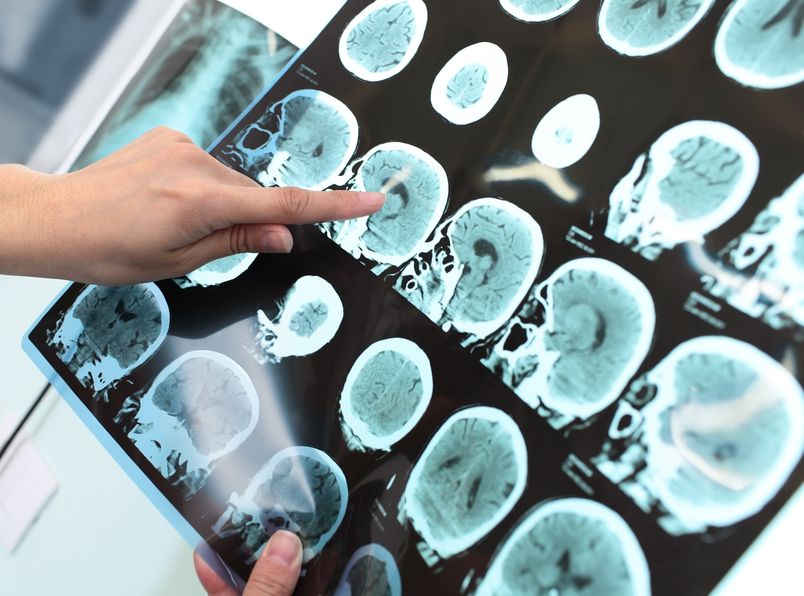Should Patients Have Access to Medical Images?

As a responsible physician, you may worry about the potential effects of giving your patients electronic access to their medical images. However, many of these fears aren’t justified by the facts. If you’re worried about the dangers of giving your patients access to their medical images, the following may help to put your mind at ease.
Let’s take a look at the risks and benefits of sharing medical images with patients:
1. Fewer Medical Malpractice Claims
2. Fewer Costs and Delays for Your Practice and Your Patients
3. Decrease Physician Workload
4. Possible Increase in Second Opinions
5. Complete Patient Electronic Health Records (EHR)
1. Fewer Medical Malpractice Claims
A rising number of medical malpractice claims are being based on too little communication between doctors and patients, rather than too much. When you give patients access to their medical images and reports electronically, they have an opportunity to ask questions or bring up concerns that neither they or you would have thought to address otherwise.
Broadening the level of communication in this way can improve your patients’ overall experience and deepen their trust that you are doing your best to take care of them and keep them involved in their own healthcare. Additionally, this will also enhance your ability to treat them effectively and reduce your risk of facing a malpractice claim.
2. Fewer Costs and Delays for Your Practice and Your Patients
By law, you must provide your patient with a copy of his or her medical image when they ask for it. Most practices do this by burning the image to a compact disc (CD) and either mailing it to the patient or having the patient come to the office to pick it up. This method incurs huge costs for the provider and presents a multitude of issues for the patient, provider and referring physician or specialist who will eventually receive it.
A single CD can cost anywhere from $7 to $75 per patient. Many CDs end up lost or damaged requiring a duplicate to be made. Worst of all, patients frequently show up to an appointment only to realize they forgot their CD. This delays their own treatment and can have a domino effect delaying their physician’s other scheduled appointments.
Delivering patient imaging electronically, using a web-based platform, saves your practice money and eliminates the risk of delayed appointments due to a lost or forgotten CD. Patients can instead login to their online access platform using their mobile phone, select the image they want to share with their physician, and the physician will receive an email with the link to pull the image up on their own viewer.
3. Decrease Physician Workload
Some doctors worry that giving patients access to their medical images will end up adding to their workload and taking time away from their day. They fear that patients will inundate their office with phone calls, asking innumerable questions and therefore taking up even more of the doctor’s time. However, studies show that there is no appreciable increase in the time doctors spend answering patient questions when they give patients access to their medical images.
Dr. Steven Mendelsohn, president and medical director of Zwanger-Pesiri Radiology in Long Island, NY, began offering online patient access to imaging at his radiology practice in 2012 and reported that he hasn’t seen any influx of frantic patient calls. “If I estimate one to two calls per week per radiologist, I may be overestimating it,” Mendelsohn said.
Though this access to images and reports may spark questions that the patient wouldn’t otherwise have thought to ask, that is generally a benefit to both patient and physician. Having this access and level of communication, as we mentioned, may help patients to better understand their condition and therefore help them to avoid other unnecessary questions or concern.
As for any additional workload, sharing studies electronically with patients will actually decrease the physician’s workload by eliminating the labor required to burn and deliver CDs. Electronic access is faster, more efficient and less labor intensive.
4. Possible Increase in Second Opinions
When patients have access to their medical imaging studies, they are empowered to ask other doctors for a second opinion. Doctors who feel uncomfortable about this truly have nothing to fear. Yes, it’s possible that the second opinion could result in a different diagnosis or treatment plan than you provided, but that can be a good thing. A second perspective could catch something that you missed or it could prompt the patient to seek a third opinion which can help them affirm the direction they should go with their healthcare.
The second opinion could also confirm your diagnosis, giving the patient peace of mind that they’ve done their due diligence to consider every angle of their condition. No one is infallible and patients know this. In the event that your diagnosis is incorrect or incomplete, it’s better to find this out as early as possible so you can ensure the best treatment outcome for your patient (which also goes back to point #1 - fewer medical malpractice claims!).
5. Complete Patient Electronic Health Records (EHR)
When a patient visits their general practitioner (GP) with ankle pain, the GP might not have access to x-rays of an old injury that the patient had treated at another clinic several years before. This reduces the physician's ability to offer an accurate, complete diagnosis and give comprehensive advice to the patient. It’s crucial that the patient is able to have all of their medical images included in their electronic health record (EHR) so their information is updated and complete.
If the patient has electronic access to their own medical images, they can share these images with the GP to upload to their EHR. As a result, whenever and wherever they need medical care, the treating physician will have access to their complete medical information, leading to better medical outcomes overall.
Key Takeaway
We no longer operate in the old way of thinking where the doctor has all of the information and the patient has none. We are in an age where the more information you can give to your patients, the better the treatment outcome and the better patient experience overall.
You must give your patient a copy of their medical images when they ask for one, and the way you deliver it to them is key for the success of your organization. Offering patients electronic access to their medical images increases patient satisfaction and patient-physician communication while decreasing the workload, costs, and risk for possible medical malpractice claims. Lastly, it can help produce better medical outcomes overall.





